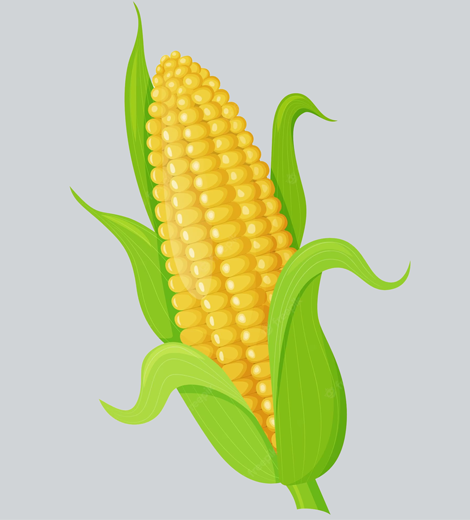
Maize/Corn
Maize, commonly known as corn in North America, is a versatile and widely cultivated cereal grain. It has a multitude of uses in various industries and as a food source.
Maize is an annual grass that typically grows to a height of 6 to 12 feet (1.8 to 3.7 meters). It produces a distinctive cob, also known as an ear, which contains the maize kernels.
Direct Consumption: Maize is a staple food for millions of people worldwide. It can be consumed fresh (sweet corn), dried (popcorn), and processed into flour for making bread, tortillas, and a wide range of dishes.
Cornmeal and Grits: Ground maize is used to make cornmeal and grits, which are essential ingredients in traditional dishes like polenta in Italy and cornbread in the United States.
Snacks: Maize is used to make various snacks, including corn chips, popcorn, and breakfast cereals.
Carbohydrates: Maize is primarily composed of carbohydrates, predominantly in the form of starch. It serves as a valuable source of dietary energy.
Protein: While maize contains protein, it is not as protein-rich as some other grains like wheat or soybeans. The protein content can vary depending on the variety.
Dietary Fiber: Maize contains dietary fiber, which is important for digestive health.
Vitamins and Minerals: It provides various vitamins and minerals, including vitamin A, vitamin C, potassium, and some B vitamins.
Fat: Maize contains a small amount of fat, primarily in the form of unsaturated fats.
Maize/Corn is a versatile cereal grain with numerous uses. It serves as a staple food for humans, a key ingredient in animal feed, and plays a vital role in various industrial applications, including biofuel production and the manufacture of starch, sweeteners, and corn oil. Its adaptability and wide range of uses make it one of the most important cereal crops globally.
